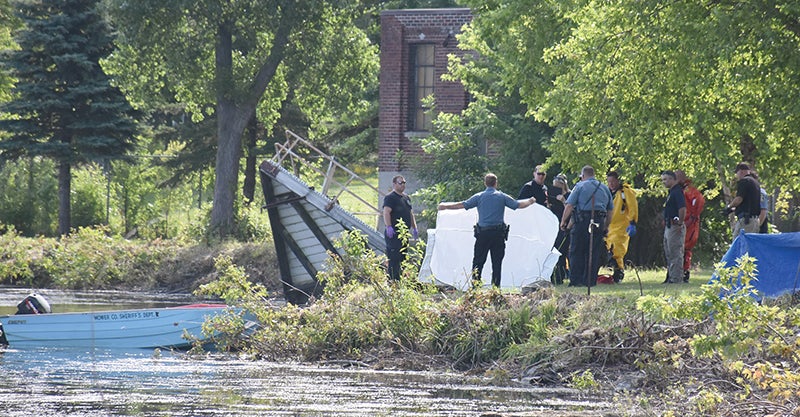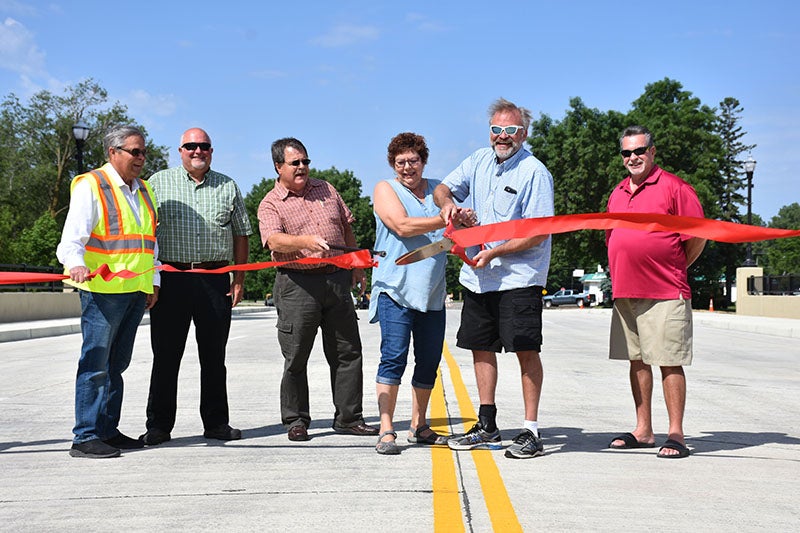National Weather Service radio hits local air waves
Published 12:00 am Tuesday, January 16, 2001
Residents of Mower County and surrounding areas now can receive up-to-date weather information on special radio receivers in their homes or businesses.
Tuesday, January 16, 2001
Residents of Mower County and surrounding areas now can receive up-to-date weather information on special radio receivers in their homes or businesses.
The National Weather Service began broadcasting 24 hours a day from its new transmitter near St. Ansgar, Iowa, last week and the signal is concentrated on Mower County, as well as Mitchell County, Iowa.
Located on KIMT Channel 3’s tower, located off Highway 218 between St. Ansgar and Osage, Iowa, the transmitter broadcasts weather information and forecasts on a continuous basis. The broadcasts on the VHF radio band can be received on special weather radios or other radios such as citizens band or scanners that can receive weather frequencies.
KIMT is offering the tower space and shelter for the transmitter to the NWS for free, according to Todd Shea, warning coordination meteorologist with the NWS in La Crosse, Wis. The antenna is located at about the 360-foot level on KIMT’s 1,500-foot tower.
The transmitter is a full 1,000 watts and is expected to cover not only Mower and Mitchell counties, but also Worth, Cerro Gordo, Floyd, Howard and Chickasaw counties in Iowa. A lower-power transmitter had been planned, however, the full-power transmitter will allow the weather transmissions to reach as far as Mason City and Clear Lake, Iowa, too.
Shea said that the final tuning of the transmitter hasn’t been done. When that is accomplished, the NWS plans to conduct a survey of the transmitter’s coverage area to determine where the signal is reaching. The signal can be heard well in the Austin area.
Once the survey is completed, the weather service hopes to learn whether they can add Freeborn County to those counties included in the transmitter’s area. While the other counties included in the transmitter’s coverage area are handled by the La Crosse office, Freeborn County is covered by the NWS’ Chanhassen office.
The new transmitter broadcasts on a frequency of 162.450 megahertz. Older three-channel weather radios will not receive the new frequency. Shea said that only newer seven-channel weather radios will receive the St. Ansgar transmitter. Weather radios are available in area electronics and department stores.
Weather information is repeated every four to seven minutes, depending on the weather, and includes: current conditions for Austin, Mason City and other regional cities; a short-term forecast for up to the next six hours; an area synopsis of weather systems affecting the upper Midwest for the next few days; and a seven-day forecast for Austin, Mason City and surrounding counties.
The weather service also can send out alert signals to persons with specially equipped weather radios so they know when there is severe weather. In addition to wide-area alerts that older weather radios are capable of decoding, newer weather radios can be set up to receive alerts for a single county. By entering a six-digit code, the alert siren on a weather radio will sound only when there is a warning or watch pertinent to the selected county.
A dedication ceremony for the new transmitter will be held at noon Jan. 31 in the Osage Municipal Building, 720 Chestnut St., Osage. Speakers planning to attend include Ellen Gordon of the Iowa Emergency Management Division, Steve Martinson of KIMT, Ray Huftalin of Mitchell County Emergency Management, Jeff Johnson of the Des Moines NWS office, as well as other federal, state and local officials.
The ceremony will detail efforts by the state of Iowa to expand NWS’ weather transmitters for weather and other emergency notifications throughout the state. The public is invited to attend the ceremony.
To learn more about weather radio for the area, visit the La Crosse NWS site at http://www.crh.noaa.gov/arx.





